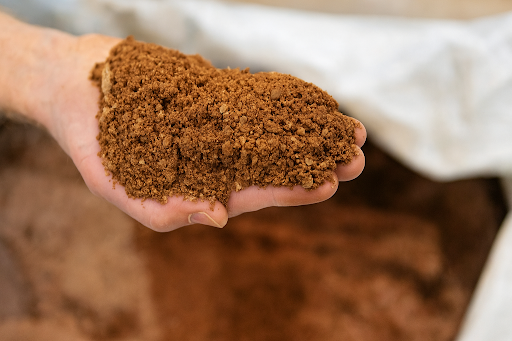





Disclaimer: Copyright infringement not intended.
Context: A large group of Dhangars recently marched to the office of the subdivisional officer in Khamgaon of Maharashtra’s Buldhana district, demanding a “grazing corridor” for their sheep and goats.
Details:
What is the Dhangar community?
Distribution
Population
Legal Status
Livelihood and culture
Political Representation
How the ST status will help the community?
Grazing and forests under FRA 2006
Pastoralists in the Modern India
Statistics
|
Pastoral Group |
State and Location |
Ethnic Identity |
Species |
|
BakKarwal |
Jammu and Kashmir |
- |
Mainly goats |
|
Bharwad |
Gujarat |
Gujarati speaking Hindu group; Motabhai raise sheep and goat, Nanabhai are cattle breeders |
Sheep, goats, and cattle |
|
Bhotia |
Uttarakhand, upper regions of Garhwal and Kumaon |
Mainly Hindu, some Buddhist, speak Pahari |
Sheep, goats, and cattle |
|
Bhutia |
North district of Sikkim |
Buddhist, speaking Tibetan dialects |
Sheep, goats, and cattle |
|
Changpa |
Jammu and Kashmir, mainly in Zanskar |
Buddhist group, speaking Ladakhi |
Yak |
|
Charan |
Gir forest region of Gujarat |
Gujarati speaking Hindu group |
Cattle |
|
Dhangar |
Maharashtra, Karnataka, and Madhya Pradesh |
Hindu group, speaking Marathi |
Sheep |
|
Gaddis |
Himachal Pradesh and Jammu and Kashmir |
Hindu group, speak Pahari |
Sheep and goats |
|
Gaddi Muslim |
Bihar, Rajasthan, and Uttar Pradesh |
Muslim group, speaking various dialects of Hindi |
Cattle, mainly urban dairymen |
|
Gaderia |
Uttar Pradesh, Madhya Pradesh, and Haryana |
Hindu group, speaking dialects of Hindi |
Sheep and goats |
|
Gavli |
Maharashtra, Goa, Karnataka, and Gujarat |
Marathi, Konkani Dhangar Hindu sub-group, although some are Muslims |
Cattle |
|
Gayri |
Southern Rajasthan (Mewar) |
An endogamous Gaderia Hindu sub-group, speak Rajasthani |
Sheep and cattle |
|
Ghosi |
Bihar, Rajasthan, and Uttar Pradesh |
Muslim group |
Cattle |
|
Golla (Nandiwala) |
Andhra Pradesh and Maharashtra |
Telugu speaking Hindu group |
Cattle |
|
Gujjar |
Jammu and Kashmir, Himachal Pradesh, and Rajasthan |
Muslim group in Jammu and Kashmir and Himachal Pradesh, speaking Gojri. Hindu in Rajasthan, speaking Rajasthani |
Buffalo, also cattle generally |
|
Jath |
Kutch region of Gujarat |
Kutchii speaking Muslim group |
Cattle and occasionally camels |
|
Kinnaura |
Kinnaur District of Himachal Pradesh |
Rajputs or Khasias and Brus, including both Buddhists and Hindu |
Sheep and goats |
|
Kuruba |
Karnataka |
Kannada speaking Hindu group |
Sheep |
|
Kuruma |
Andhra Pradesh |
Telugu speaking Hindu group |
Sheep |
|
Mer |
Saurashtra region of Gujarat |
Hindu group, Gujarati speaking |
Camels, also some cattle |
|
Monpa |
Tawang and West Kameng districts of Arunachal Pradesh |
Buddhist, speaking Tibetan dialects |
Yak and cattle |
|
Rath |
Western Rajasthan (Ganganagar and Bikaner districts) |
Muslim group, speaking dialects of Rajasthani |
Cattle, mainly of the Rathi breed |
|
Rebari/Raika |
Rajasthan and Gujarat |
Dialects of Rajasthani |
Camel, cattle, and goats |
|
Sindhi Sipahi/Sindhi Musalman |
Marwar and Jaisalmer |
Muslim group, speak Rajasthani |
Mainly camels, also cattle and sheep |
|
Toda |
Nilgiri region of Tamil Nadu, Kerala, and Karnataka |
Animist group, speak the Toda language |
Cattle |
|
Van Gujar |
Uttarakhand and Uttar Pradesh |
Gojri speaking Muslim group |
Buffalo |

Source
https://en.wikipedia.org/wiki/Nomads_of_India
|
PRACTICE QUESTION Q. Consider the following Pairs State Pastoralists
Which of the above pair/s is/are correctly matched? A. 1 and 2 only B. 1,2 and 3 only C. 1,3 and 4 only D. 3 and 4 only Answer C |







© 2025 iasgyan. All right reserved